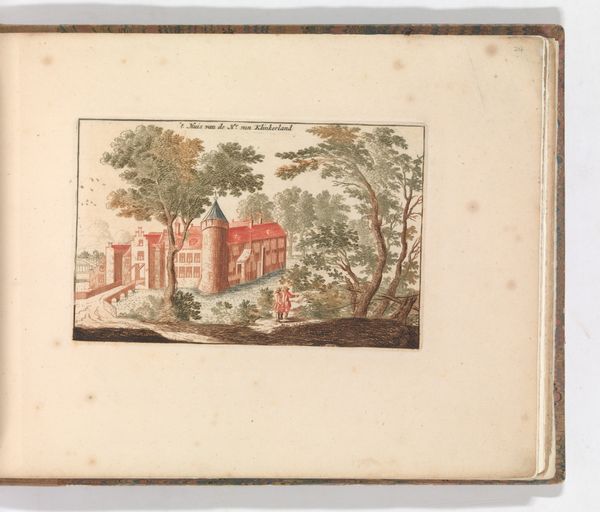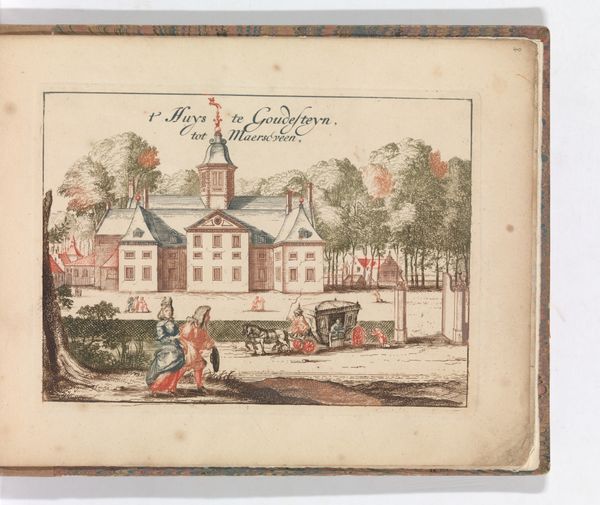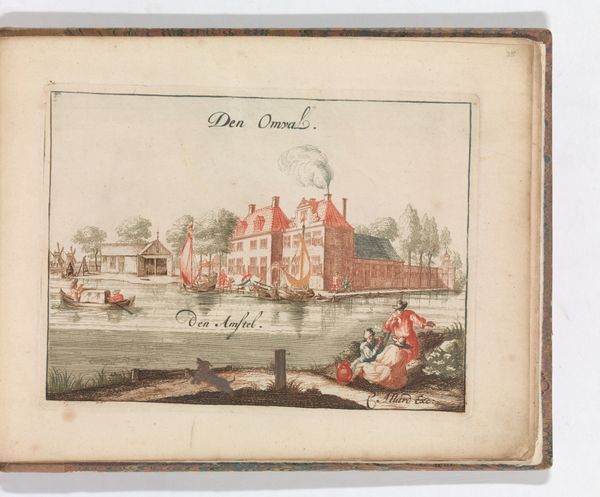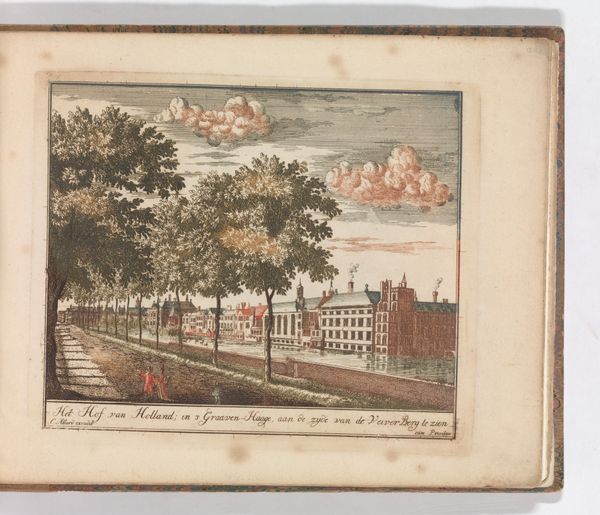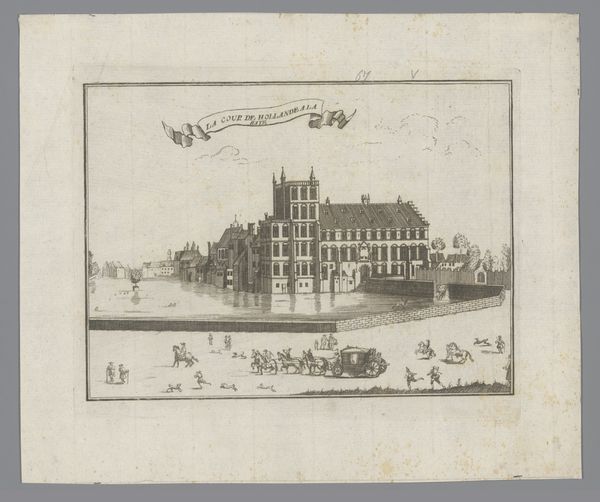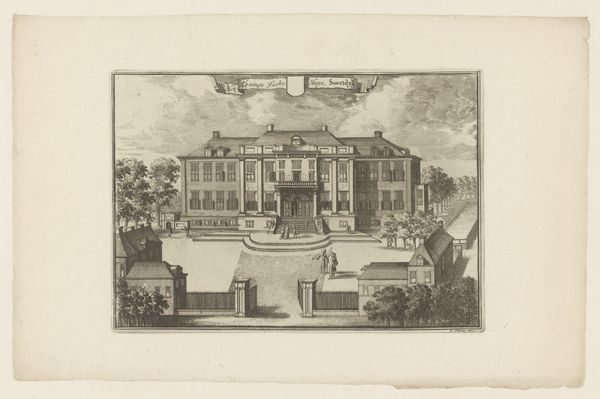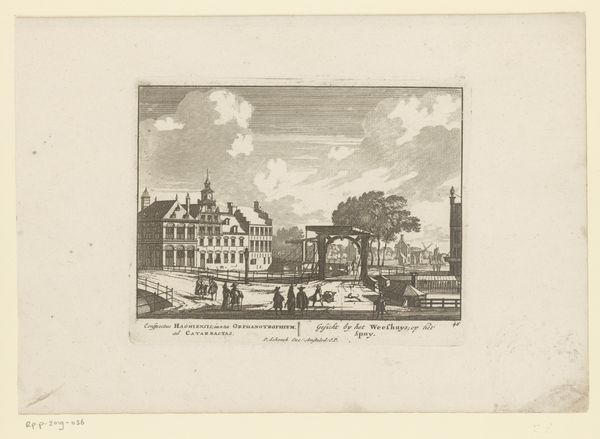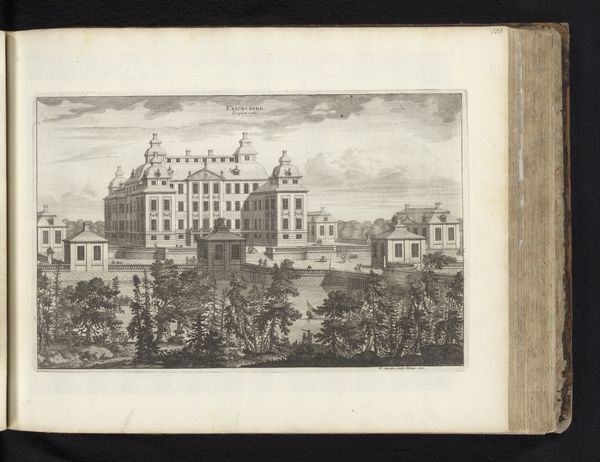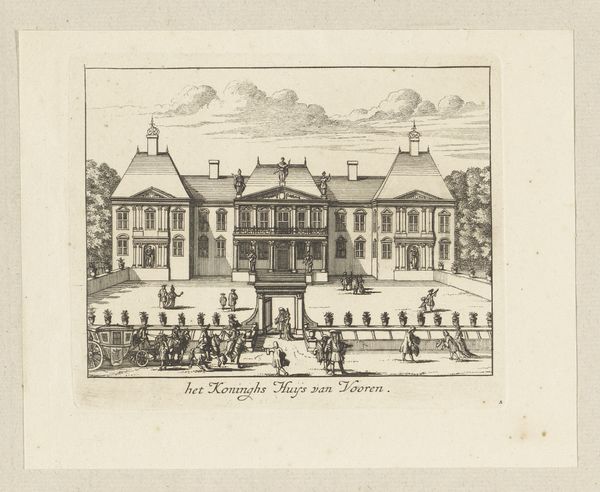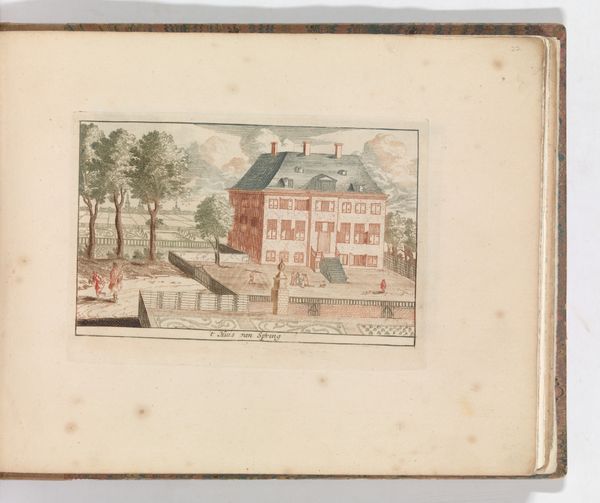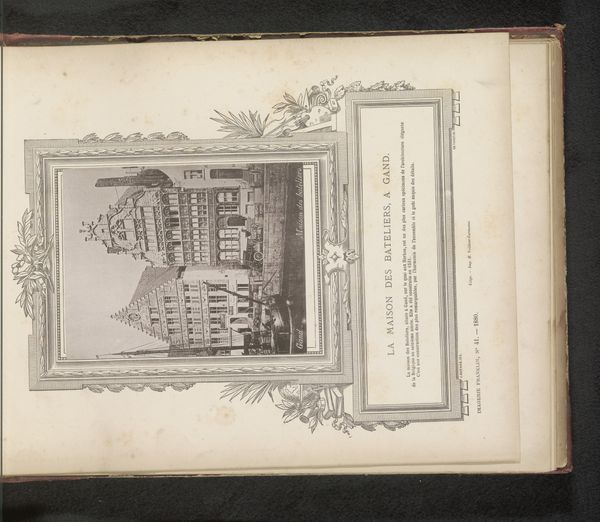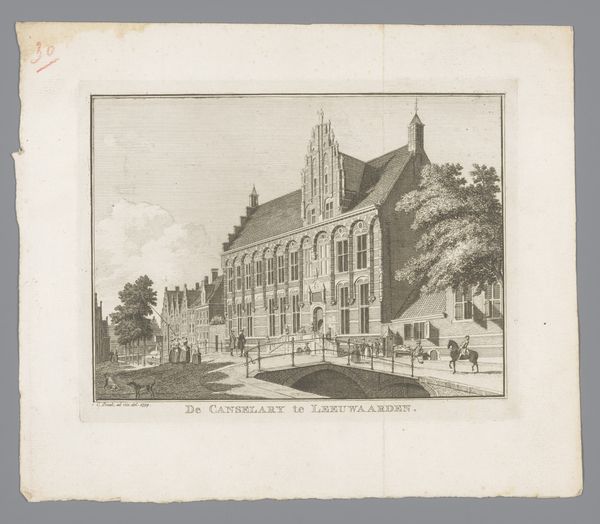
't Huis te Honslaarsdyk', in: Tooneel Der Voornaamste Nederlands Huizen, En Lust Hoven, Naar T Leven Afgebeeld 1660 - 1693
0:00
0:00
drawing, print, etching
#
drawing
#
baroque
# print
#
etching
#
landscape
#
cityscape
Dimensions: Plate: 4 7/16 × 6 7/16 in. (11.3 × 16.4 cm)
Copyright: Public Domain
Editor: This etching by Carel Allard, dating from 1660 to 1693, depicts 't Huis te Honslaarsdyk. The symmetry is striking, but I wonder what purpose these kinds of prints served back then. What’s your take on it? Curator: Prints like these served as both records and promoters of power. Honslaarsdyk Palace, now mostly destroyed, was an important residence for the House of Orange-Nassau. Consider this image as carefully crafted propaganda. It emphasizes the family's wealth and sophistication during a period of political maneuvering and nation-building. The Baroque style, with its grandeur, was often used to visually express authority. Editor: So, this wasn't just a pretty picture; it had a political function. Did owning or commissioning such images say something specific about a person's social standing? Curator: Absolutely! Possessing these images – or, even better, the actual estate they depicted – displayed your alignment with and potential access to that power. Furthermore, circulating these images, especially through print, extended that influence and projected a desired image onto the public consciousness. The way the scene is framed also manipulates our perspective. Notice the elevated vantage point, as if we are granted a privileged view of this magnificent estate, reinforcing its importance and grandeur. What do you make of the figures populating the landscape? Editor: They seem to exist solely to give scale to the architecture, but their presence also hints at leisure and privilege associated with the estate. I hadn’t thought about the political angle before, so it’s like uncovering a hidden layer of meaning! Curator: Precisely! Understanding the historical context is crucial to unlocking these layers. Images are never neutral; they are products of their time and tools within complex social systems. Editor: I’ll definitely keep that in mind moving forward; thinking about who commissioned the work, and why. Thanks for highlighting this often overlooked aspect!
Comments
No comments
Be the first to comment and join the conversation on the ultimate creative platform.
